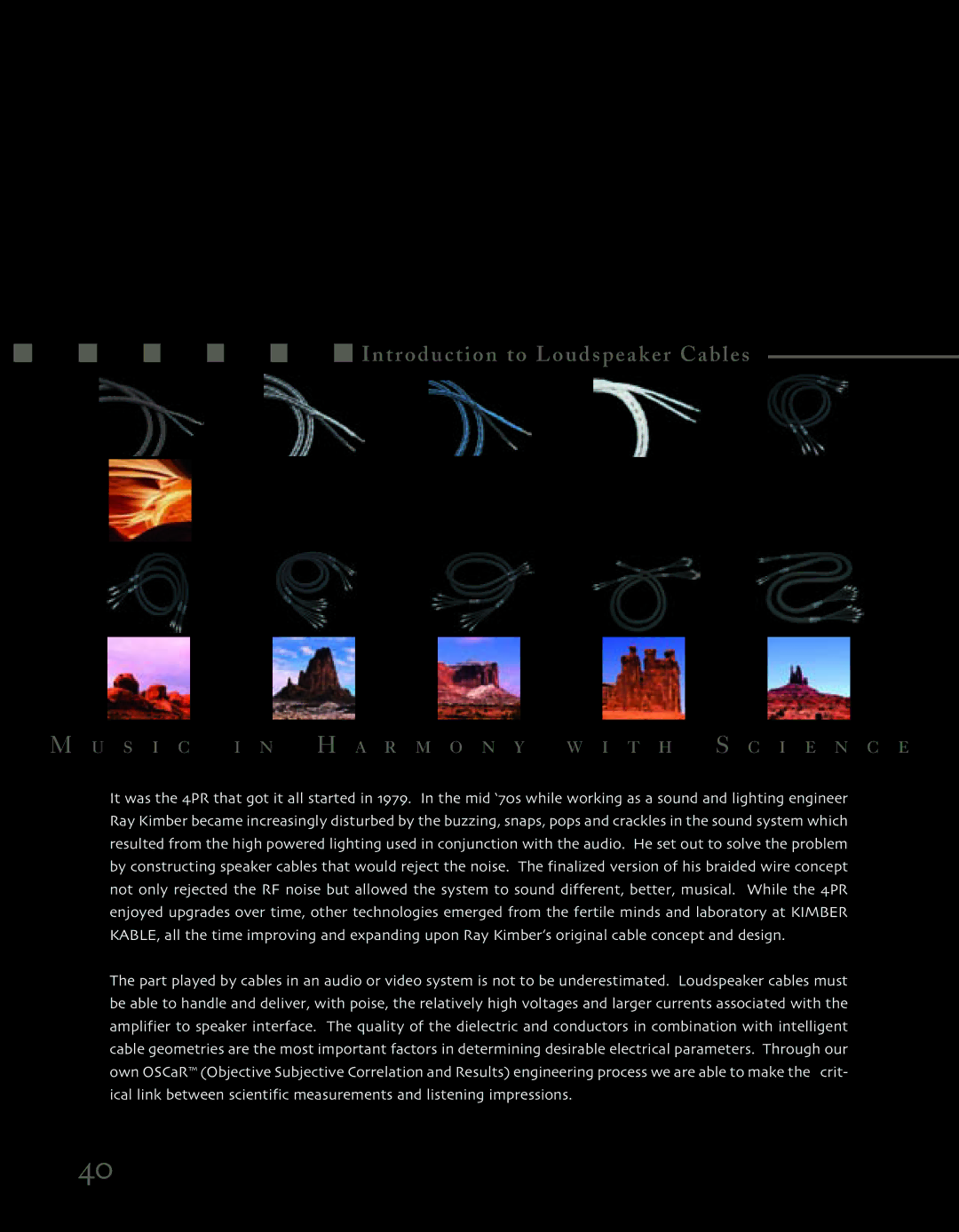
![]() Introduction to Loudspeaker Cables
Introduction to Loudspeaker Cables
M u s i c i n H a r m o n y w i t h S c i e n c e
It was the 4PR that got it all started in 1979. In the mid ‘70s while working as a sound and lighting engineer Ray Kimber became increasingly disturbed by the buzzing, snaps, pops and crackles in the sound system which resulted from the high powered lighting used in conjunction with the audio. He set out to solve the problem by constructing speaker cables that would reject the noise. The finalized version of his braided wire concept not only rejected the RF noise but allowed the system to sound different, better, musical. While the 4PR enjoyed upgrades over time, other technologies emerged from the fertile minds and laboratory at KIMBER KABLE, all the time improving and expanding upon Ray Kimber’s original cable concept and design.
The part played by cables in an audio or video system is not to be underestimated. Loudspeaker cables must be able to handle and deliver, with poise, the relatively high voltages and larger currents associated with the amplifier to speaker interface. The quality of the dielectric and conductors in combination with intelligent cable geometries are the most important factors in determining desirable electrical parameters. Through our own OSCaR™ (Objective Subjective Correlation and Results) engineering process we are able to make the crit- ical link between scientific measurements and listening impressions.
40
